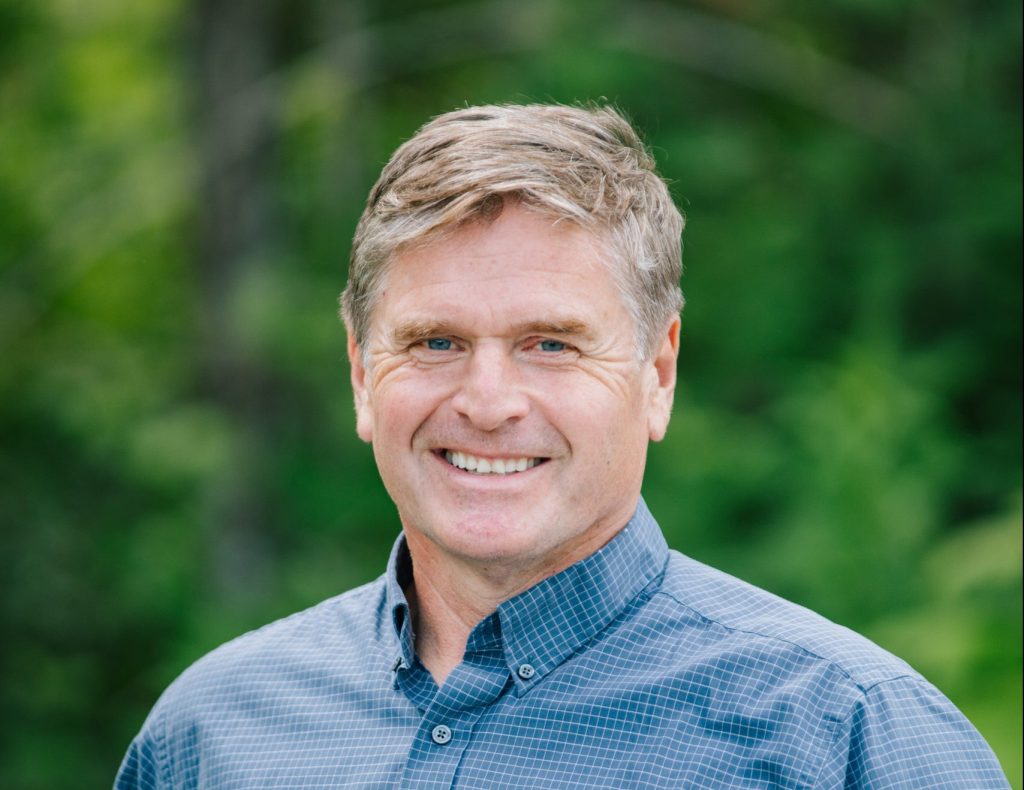
Features
Forestry Management
Harvesting
Why do we still log old-growth? The answer is not in a 15-second sound bite
November 15, 2021 By Bob Brash
 Bob Brash is the executive director of the Truck Loggers Association in B.C.
Bob Brash is the executive director of the Truck Loggers Association in B.C. Over the past several months, I had the honour of engaging in professional, respectful, and dynamic conversations with many of B.C.’s resource communities’ leadership, which we will work hard to continue.
The one consistent question I continued to hear was, “Why do we still log old-growth?” It’s a fair question asked by those who want to support forestry, but also want to better understand the issues.
Unfortunately, the current environmentalists’ movement appears to have gained momentum in their self-serving messaging that all timber harvesting is bad, especially old-growth. And honestly, the industry should be doing a better job in helping the public better understand the importance of B.C.’s forestry sector, which needs to include harvesting old-growth, and many of us are working hard to rectify that situation.
The simple answer is, it’s very complex. And the challenge in answering this question is it doesn’t fit into today’s digital demand for a 15-second sound bite. In trying to answer it simply, the true importance seems to get lost. Perhaps we should ask why are we protecting old-growth? Yes, we protect it for its wildlife, biodiversity, and cultural values, but the truth is, not all old-growth contains similar values. For some, it is oversimplified to protecting iconic big trees or just because it’s old. However, there are just too many factors to consider.
Today’s forest management is vastly different and more complex than it was in our parents’ and grandparents’ eras, hence the tough work ahead of us.
To start, we need to address the economic reasons to continue old-growth harvesting. Today, about 27 per cent (50 per cent on the B.C. Coast) of B.C.’s annual harvest depends on old-growth. And while fringe environmentalists don’t care and will scoff at this being nothing more than “corporate greed,” the reality is the reliance on harvesting old-growth is significant to B.C.’s viability to the tune of 100,000 jobs, 140 dependent resource communities, $15 billion in GDP, and $4 billion in tax revenues.
So, why can’t we just stop harvesting old-growth? Because if we reduce the allocated annual cut (and the associated long-term forest land base) by 27 per cent (50 per cent on the Coast), we would obviously have less to harvest, which translates to a proportionate loss of jobs, GDP, etc. Equally important, a realistic or definitive transition strategy does not exist for many resource communities. Contrary to multinational environmental groups’ solutions, we cannot throw untold and perpetual taxpayer money towards social programs and migrate forest workers to service sector jobs.
Let’s not forget about the fact B.C. will never run out of old-growth; the equivalent of 12 million football fields of formally and de facto forever-protected old-growth. Each year, only one-third of one per cent of B.C.’s forests are logged and only 0.1 per cent (yes, you read that right) is old-growth, and only about 23 per cent of B.C.’s land area is considered working forest. Not to mention, B.C.’s forests are the most independently certified forests in the world.
We know none of this will matter to some; but it should.
Let’s talk about the often-stated, but broadly worded objective of increasing B.C.’s value-added sector. Currently, the vast majority of the sector depends on old-growth for its products. There will be opportunities for value-added using second-growth, but the enhanced development of these opportunities will take significant capital in terms of new machinery and technology along with years to develop the markets for any such envisioned products. In other words, we need time to transition along with an investment climate that will be stable and considered favourable to those making such business decisions.
Do the math; a reasonable 10- to 20-year transition period would result in about only one to two per cent more of B.C.’s old-growth being harvested. Most rational people would consider that a reasonable solution and transition time. However, the die-hard eco-warriors don’t care or even try to understand.
Despite varying perspectives, the reality is that all old-growth is not created equal simply due to where it grows and its history.
In other words, most of it is not even close to resembling the majestic trees seen in areas such as those in Cathedral Grove on Vancouver Island. And many of the stands are in a state of decay and mortality rendering them ineffective in the climate objective of sequestering carbon. Additionally, prior to approval, any proposed harvest area goes through years of assessments and consideration for other values such as habitat, cultural features, and hydrological concerns.
Wood is clearly the most sustainable, renewable, and carbon-positive product that will help in sequestering carbon and mitigating climate impacts. Unless the utopian world envisioned by fringe environmentalists has us in straw huts (which would be worse for climate change), the world will continue to demand and need wood. In B.C., we can provide such a product from the most regulated, certified, and balanced forest regime in the world.
The final answer to why we harvest old-growth will never be simplistic. The harsh reality is the resolution to the issues will need to be found within the bounds of people understanding balanced solutions and not those wandering the fringes of reality.
Bob Brash is the executive director of the Truck Loggers Association in B.C. and has worked in the public, private, and First Nation sectors throughout his 45-year career.
Print this page